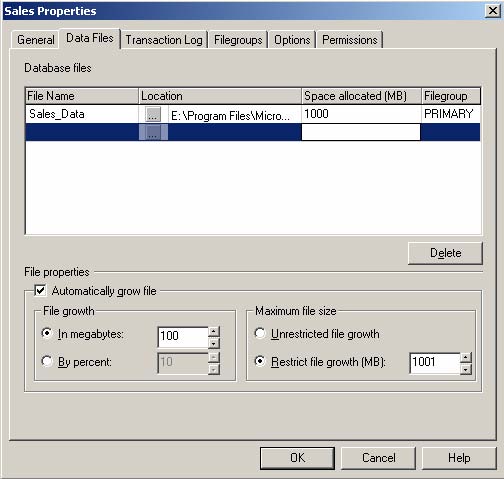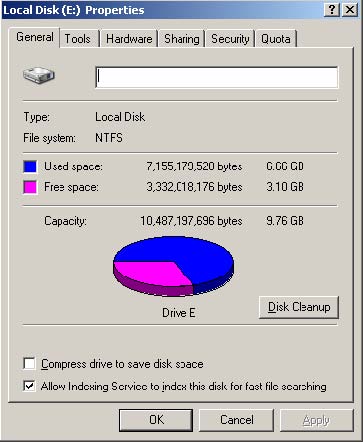A support engineer reports that inserting new sales transactions in a SQL Server 2005 database results in an error. You investigate the error. You discover that in one of the databases, a developer has accidentally deleted some data in a table that is critical for transaction processing. The database uses the full recovery model. You need to restore the table. You need to achieve this goal without affecting the availability of other data in the database. What should you do?()
第1题:
You are the administrator of a new multiprocessor SQL Server 2000 computer. You are migrating data from other database management systems to this server. You need to load data from two data files into a new table on the server. The table is empty and has no indexes.
You want to complete the data load as quickly as possible. What should you do? (Each correct answer represents part of the solution. Choose all that apply.)
A.Apply a bulk update lock to the table.
B.Use separate client connections to load the files into the table simultaneously.
C.Create a clustered index on the table.
D.Specify the Full Recovery model for the database.
E.Specify the Bulk-Logged Recovery model for the database.
第2题:
You work at the regional sales office. You are responsible for importing and exporting data in SQL Server 2005 databases. The main office asks you to send them a text file that contains updated contact information for the customers in your region. The database administrator in the main office asks that the data be sorted by the StateProvince,Surname, and FirstName columns.You need to satisfy these requirements by using the least amount of effort. What should you do?()
第3题:
You are the database administrator for a retail company. The company owns 270 stores. Every month, each store submits approximately 2,000 sales records, which are loaded into a SQL Server 2000 database at the corporate headquarters.
A Data Transformation Services (DTS) package transforms the sales records, as they are loaded. The package writes the transformed sales records to the Sales table, which has a column for integer primary key values. The IDENTITY property automatically assigns a key value to each transformed sales record.
After loading this month's sales data, you discover that a portion of the data contains errors. You stop loading data, identify the problem records, and delete those records from the database.
You want to reuse the key values that were assigned to the records that you deleted. You want to assign the deleted key values to the next sales records you load. You also want to disrupt users' work as little as possible.
What should you do?
A.Export all records from the Sales table to a temporary table. Truncate the Sales table, and then reload the records from the temporary table.
B.Export all records from the Sales table to a text file. Drop the Sales table, and then reload the records from the text file.
C.Use the DBCC CHECKIDENT statement to reseed the Sales table's IDENTITY property.
D.Set the Sales table's IDENTITY_INSERT property to ON. Add new sales records that have the desired key values.
第4题:
You work with a SQL Server 2005 database that provides banking information for customers. You want customers to see banking reports that combine data that is retrieved from the database with real-time investment information that comes from a Web service provided by a third party. The investment information must be current when the reports are executed. You need to create the appropriate objects that support the reports. What should you do?()
第5题:
You need to migrate the DeliveryVans, AirlinePreferences, and SeasonalContractors databases into the data center. What should you do?()
第6题:
You are the database administrator for an accounting company. You are installing SQL Server 2000 on a new Microsoft Windows 2000 Server computer. The computer will run two client/server database applications that your company has purchased. Each application uses a separate database.
During the installation, you specify SQL_Latin1_General_CP1_CI_AI as the default collation for the SQL server computer. After completing the installation, you discover that one of the new applications, named Financials, is sorting information incorrectly.
You contact the application vendor and discover that the Financials application requires the SQL_Latin1_CP437_BIN collation. You need to configure the correct collation for the applications without diminishing the performance of the SQL Server computer.
What should you do?
A.Rerun the SQL Server Setup and specify the SQL_Latin1_General_CP437_BIN collation.
B.Run the rebuildm utility and specify the SQL_Latin1_General_CP437_BIN collation.
C.Use the ALTER DATABASE statement to specify the SQL_Latin1_General_CP437_BIN collation for the Financials database.
D.Use the ALTER TABLE statement to specify the SQL_Latin1_General_CP437_BIN collation for each table in the Financials database.
第7题:
You work in Dublin at the main office of TestKing.com. You are responsible for managing a SQL Server 2005 database. The sales department wants a report that compares customer activity in the previous quarter between the main office in Dublin and the branch office in Buenos Aires. They want the data sorted by surname and first name.You restore a recent backup of the Buenos Aires database onto your server. You write queries to build the report, ordering the data by the Surname and FirstName columns. You review the data and notice that the customer list from the Buenos Aires database is sorted differently. The sales department needs the revised data within 15 minutes for a presentation. You need to implement the fastest possible solution that ensures that the data from both databases is sorted identically. What should you do?()
第8题:
You are the administrator of a SQL Server 2000 computer. The server contains database named Sales. Users report that they cannot add new data to the database. You examine the properties of the database. The database is configured as shown in the Sales Properties exhibit.

You examine drive E. The hard disk is configured as shown in the Local Disk Properties exhibit.

You want the users to be able to add data, and you want to minimize administrative overhead. What should you do?
A.Increase the maximum file size of Sales_Data to 1,500MB.
B.Use the DBCC SHRINKDATABASE statement.
C.Set automatic file growth to 10 percent.
D.Create another data file named Sales_Data2 in a new SECONDARY filegroup.
第9题:
In your production database, data manipulation language (DML) operations are executed on the SALES table.You have noticed some dubious values in the SALES table during the last few days. You are able to track users, actions taken, and the time of the action for this particular period but the changes in data are not tracked.You decide to keep track of both the old data and new data in the table along with the user information. Whataction would you take to achieve this task()
第10题:
You are a professional level SQL Server 2005 database administrator in an international corporation named Wiikigo. You are experienced in implementing high-availability solutions, monitoring the database server, and design deployment. In the company, you major job is the deployment, maintenance and support of Microsoft SQL Server 2005. You work as a database administrator for your company. There is a database named Inventory on a SQL Server 2005 computer, and the computer is named SQL01. SQL01 is utilized to aggregate manufacturing part numbers from your company’s trading partners. And the company stores the manufacturing part numbers in the Product table in the Inventory database. The company requests the users to deliver data as text files from each trading partner to SQL1 every night. The data should be imported, and no duplicate manufacturing part numbers should exist in the data which is imported from the text files, and the text files are stored in the Inventory database on SQL01. You should cut the effect on your company’s trading partners and your IT department to the least. Which action should you perform?()